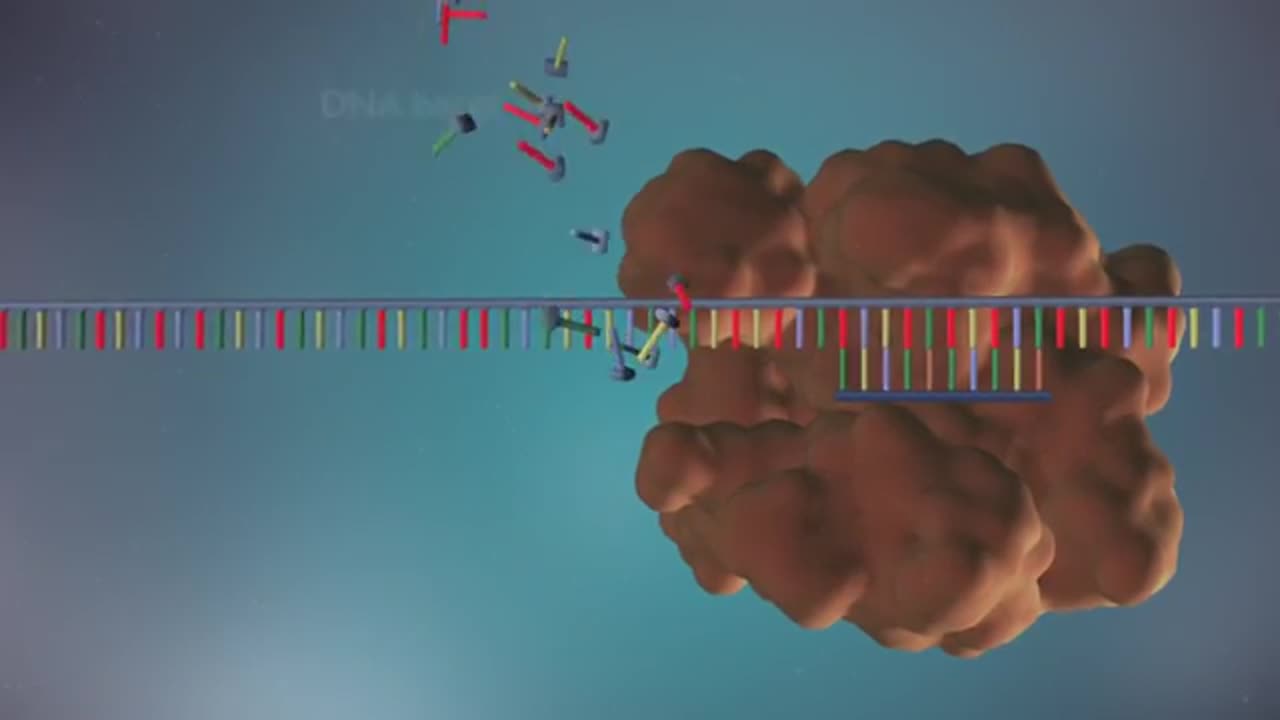Premium Only Content

HUMAN DNA REPLICATION
DNA replication is the process by which a cell duplicates its DNA, ensuring that each daughter cell receives an exact copy of the genetic material. Here’s a basic overview of how it works:
Initiation: The process begins at specific locations on the DNA molecule called origins of replication. Proteins recognize these sites and unwind the double helix, creating a replication bubble.
Unwinding: Enzymes called helicases break the hydrogen bonds between the two strands of DNA, separating them. This creates a replication fork, where the two strands are exposed for copying.
Stabilization: Single-strand binding proteins attach to the separated strands to keep them from re-annealing or forming secondary structures.
Priming: DNA polymerase, the enzyme responsible for synthesizing new DNA, cannot start from scratch. A short RNA primer, synthesized by primase, provides a starting point for DNA polymerase.
Elongation: DNA polymerase adds nucleotides to the growing strand in a 5' to 3' direction, complementary to the template strand. The leading strand is synthesized continuously, while the lagging strand is synthesized in short fragments (Okazaki fragments) due to its opposite orientation.
Replacement of RNA Primers: Once the new DNA strands are synthesized, the RNA primers are removed and replaced with DNA nucleotides.
Ligation: The Okazaki fragments on the lagging strand are joined together by the enzyme DNA ligase, sealing any gaps in the sugar-phosphate backbone.
Termination: The replication process continues until the entire DNA molecule is copied. Each new DNA molecule consists of one original (parental) strand and one newly synthesized strand, making the process semi-conservative.
DNA replication is highly accurate, but errors can occur. Cells have repair mechanisms to correct these mistakes, ensuring the integrity of the genetic information.
-
 LIVE
LIVE
Dr Disrespect
4 hours ago🔴LIVE - DR DISRESPECT - TRIPLE THREAT CHALLENGE - WZ, PUBG, TARKOV
2,169 watching -
 LIVE
LIVE
StoneMountain64
1 hour agoThe new Sniper I can't put down
591 watching -
 1:59:34
1:59:34
Steven Crowder
6 hours ago🔴 Leftists Are Massivley Depressed: What Makes Being a Conservative so Much More Enjoyable
368K181 -
 2:15:02
2:15:02
The Quartering
4 hours agoWW3 The Closest Ever, Massive Disney Layoffs, The End Of PRIDE Month, Streaming Wars & More!
127K36 -
 4:45:47
4:45:47
Akademiks
5 hours agoDay 2/30. Diddy Trial Day 15. YSL Steele Turning up the Offense... Is Diddy Exposing these VICTIMS?
57.8K5 -
 LIVE
LIVE
LFA TV
17 hours agoLFA TV ALL DAY STREAM - TUESDAY 6/3/25
2,381 watching -
 1:01:51
1:01:51
The White House
3 hours agoPress Secretary Karoline Leavitt Briefs Members of the Media, June 3, 2025
37.7K18 -
 29:19
29:19
CryptoWendyO
2 hours ago $1.41 earnedXRP RALLY AFTER $100 MILLION PURCHASE? - HBAR ETF GOES LIVE!
14.2K4 -
 17:54
17:54
ROSE UNPLUGGED
19 hours agoDid Trump Move Saudi Arabia Towards Ezekiel’s Prophecy?
10.5K -
 1:21:13
1:21:13
Simply Bitcoin
4 hours ago $2.96 earnedFed BOMBSHELL CONFIRMS $10M Bitcoin ENDGAME! | EP 1258
22K1